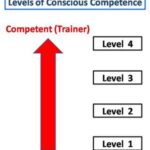Hidden Worldviews: Eight Cultural Stories that Shape Our Lives. By Steve Wilkens and Mark L. Sanford. Downers Grove: IVP Academic, 2009, 978-0-8308-3854-7, 218pp, $22.00, paperback.
Every Sunday, whether conscious of it or not, preachers engage in a conflict between clashing worldviews. The better we are able to recognize and understand the philosophies that form the various worldviews of the people sitting in the pew, the more effectively we will be able to communicate the truth and confront them with the demands of the gospel. Therein lays the great value of Hidden Worldviews: Eight Cultural Stories that Shaper Our Lives for preachers. The hidden or “lived” worldviews examined in this book, offer a glimpse into the real-life thought processes that shape the lives of the people we preach to on a weekly basis. By unveiling the hidden tapestry of thoughts and philosophies that make up people’s lives, Wilkens and Sanford take the worldview conversation out of the academic world and place it in the realm of everyday life.
So much has been written concerning the Christian or Biblical worldview over the past two decades that some may question whether a new volume is needed. However, Steve Wilkens and Mark Sanford observe that most worldview books assume that “philosophies born and perpetuated in universities represent the greatest challenge to the Christian worldview.” (p.12) The authors, however, contend that this is wrongheaded. After all, how many times do Christians living in the real world actually encounter committed Marxists or Existentialists? They state, “The reality is that we don’t really encounter massive herds of people enticed by the thought systems found in a typical worldview book.”(p.12) Their solution is to examine the worldviews that emerge from culture, that are often hidden in plain sight and could be called “lived worldviews.” Rather than approaching worldview issues from a purely academic or intellectual position, Wilkens and Sanford attempt to show that the way people develop their worldview is multidimensional. People are more than just intellectual beings, they “possess physical, economic, psychological, political, spiritual, social, and intellectual facets” all of which go into the formation of a person’s worldview. Because of this, the authors suggest that worldviews are best understood in terms of a story rather than propositions. They note that the major problem with propositional formulas is that they are too neat. Real life is messy and so are the worldviews upon which people base their lives. Stories better capture this messiness and, therefore, can offer a more accurate evaluation. The authors contend that the story of our lives is the core upon which we base our identity, convictions, values, and actions. With this in mind, they turn to an examination of nine “lived worldviews”‘”Individualism, Consumerism, Nationalism, Moral Relativism, Scientific Naturalism, The New Age, Postmodern Tribalism, and Salvation by Therapy.
Some will look at the list of “lived worldviews” and be surprised to see such topics as consumerism, and nationalism. The authors, however, do a good job of demonstrating how these “lived worldviews” form the core of some people’s identity and actions. From a practical standpoint, preachers will recognize that they are confronted almost daily with people who have bought into these nine worldviews. Every preacher knows people who have been trapped in the deception of consumerism or who have bought into the concept of moral relativism. In other words, the material in this book will preach. Furthermore, this book will force every preacher to examine the hidden elements of his own worldview. The chapters on Nationalism and Moral Relativism in particular will challenge many Pastors to rethink how they approach these issues.
The final two chapters alone are worth the price of the book and are immensely helpful to anyone wanting to be able to articulate, teach, or understand the Christian worldview. In the chapter, entitled “The Contours of a Christian Worldview” the authors unpack the story of God in five acts. Their narrative approach is not new or unique but these authors do an exceptional job of showing how the form of a story can be a powerful tool in teaching and understanding the Christian worldview. Those who are accustomed to the propositional approach will be surprised by how comprehensive and detailed the narrative approach can be. For preachers and others charged with communicating the Christian worldview to a non-Christian audience this chapter will provide a useful tool.. This basic outline of God’s story could easily be incorporated into individual sermons or expanded to form an entire series. However, the greater benefit would be for preachers to become so engrained by this outline of God’s story that it becomes woven into the very fabric of their thinking and speech.
Hidden Worldviews: Eight Cultural Stories that Shape Our Lives is a well written and helpful book. Preachers will find a wealth of information that will aid them in indentifying and understanding the worldviews of the people sitting in their pews on Sunday mornings. The book will also give insight into how these “hidden” worldviews can be confronted with the gospel of Christ.
Joseph R. Buchanan
Mid-Continent University
Mayfield, KY



